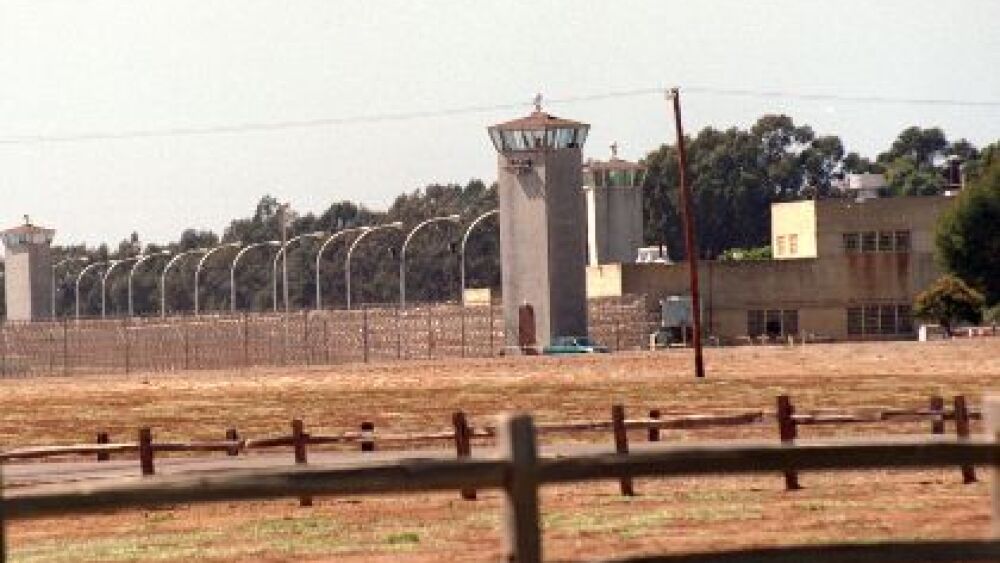By Richard Winton
Los Angeles Times
LOMPOC, Calif. — The number of inmates infected with the coronavirus at a federal prison in Lompoc, Calif., shot up to 792 this week, making it the largest federal penitentiary outbreak in the nation, surpassing a facility on Terminal Island in San Pedro, where 644 inmates have contracted the virus.
Nearly 70% of the inmates at Federal Correctional Institution Lompoc have tested positive, exploding by more than 300 in recent days, officials said Friday. FCI Lompoc along with Terminal Island now account for about 47% of all the federal inmates who have tested positive nationwide. Both prisons have done widespread testing of hundred of inmates even without symptoms.
Eleven staff members are also infected at the Lompoc facility, which houses 1,162 low-security inmates. A military mobile hospital has been built on the grounds to cope with the growing number of stricken patients.
At a neighboring medium-security prison on the same grounds, 31 inmates and 14 staff have become infected, officials said. Two inmates have died after contracting the virus there. Combined, the two federal prisons in Lompoc have had 823 infected inmates, according to the federal Bureau of Prisons.
Santa Barbara County Supervisor Gregg Hart on Friday expressed dismay with the prison and said that the county’s public health department has no power over the federal prison complex. “We have been consistently rebuffed by prison authorities,” he said. So high are the numbers coming out of FCI Lompoc that of 311 new cases reported in Santa Barbara County on Friday, it accounted for all but one, Hart said.
Hart said the prison numbers are making it hard for the county to meet Gov. Gavin Newsom’s new requirements for more widespread reopening around the state. Hart said state legislators from the area are now talking to officials in the governor’s office.
Dr. Henning Ansorg, the county’s public health officer, said about 70% of the inmates’ tests at the Lompoc prison are coming back positive.
“The vast majority of positive individuals report minor or no symptoms,” Ansorg said. The numbers are reflective of an institutional environment where people are housed in close quarters. He said the numbers at the prison may actually be higher because there is a lag time in reporting.
While Ansorg said most of the inmates show few or no symptoms, some have been hospitalized. Santa Barbara County has 1,032 cases with about 80% being in the two federal prisons.
One man died within days of his release last month, officials said. Efrem Stutson, 60, was released from Lompoc on April 1 after serving 27 years for selling cocaine. Within hours of getting off a bus in San Bernardino, he was hospitalized. Five days later he was dead after contracting COVID-19. His sister said he became sick as he was about to be released and was hardly able to walk off the bus.
At the Terminal Island facility, 644 inmates have been infected and six have died, officials said. To keep the infection rate down, inmates have been spread out across the complex. Federal correctional union leaders, however, cautioned that other federal prisons across the country likely have many infected inmates who have not been tested.
Since March 31, the federal Bureau of Prisons has implemented a strict policy of keeping inmates in their cells or assigned quarters for 14 days and barring transfers. With about 150,000 people held in federal prisons and other facilities, 3,082 inmates and 248 staff overall have tested positive for the coronavirus.
More than 14,500 inmates in various prison facilities across the country have tested positive along with more than 4,000 staff, according to the Marshall Project prison tracker. Forty-five inmates have died in federal prisons, according to the federal Bureau of Prisons.
In Chino at the California Institution for Men, four inmates have died and 332 have tested positive in the state prison system’s worst documented outbreak as mass testing has been deployed.
Following the outbreak at Lompoc, Congressman Salud Carbajal, D-Calif., joined Sens. Dianne Feinstein and Kamala Harris in sending letters to director of the Bureau of Prisons Michael Carvajal emphasizing the need for speedy action.
Rep. Nanette Diaz Barragan, D-Calif., said this week after speaking to the warden at Terminal Island that she was disappointed with the efforts to release inmates there. Only 46 prisoners are being considered and only five have been released at the low-security facility that houses roughly 1,000 medically vulnerable inmates.
She said she took her concerns to Dr. Anthony Fauci, the director of the National Institute of Allergy and Infectious Diseases and “he seemed a little alarmed.” BOP officials said they don’t comment on such matters.
The wife of one inmate, who asked not to be identified, said once her husband contracted the virus at Terminal Island, he was taken to a San Pedro hospital, but it took her days to find out where he was sent. She said she didn’t learn how serious his condition was until she spoke with a hospital chaplain.
The woman said her husband survived the illness and is now back at the prison but is still struggling to recover.
“He is very weak,” she said. “He fell down in the shower.”
———
©2020 Los Angeles Times












